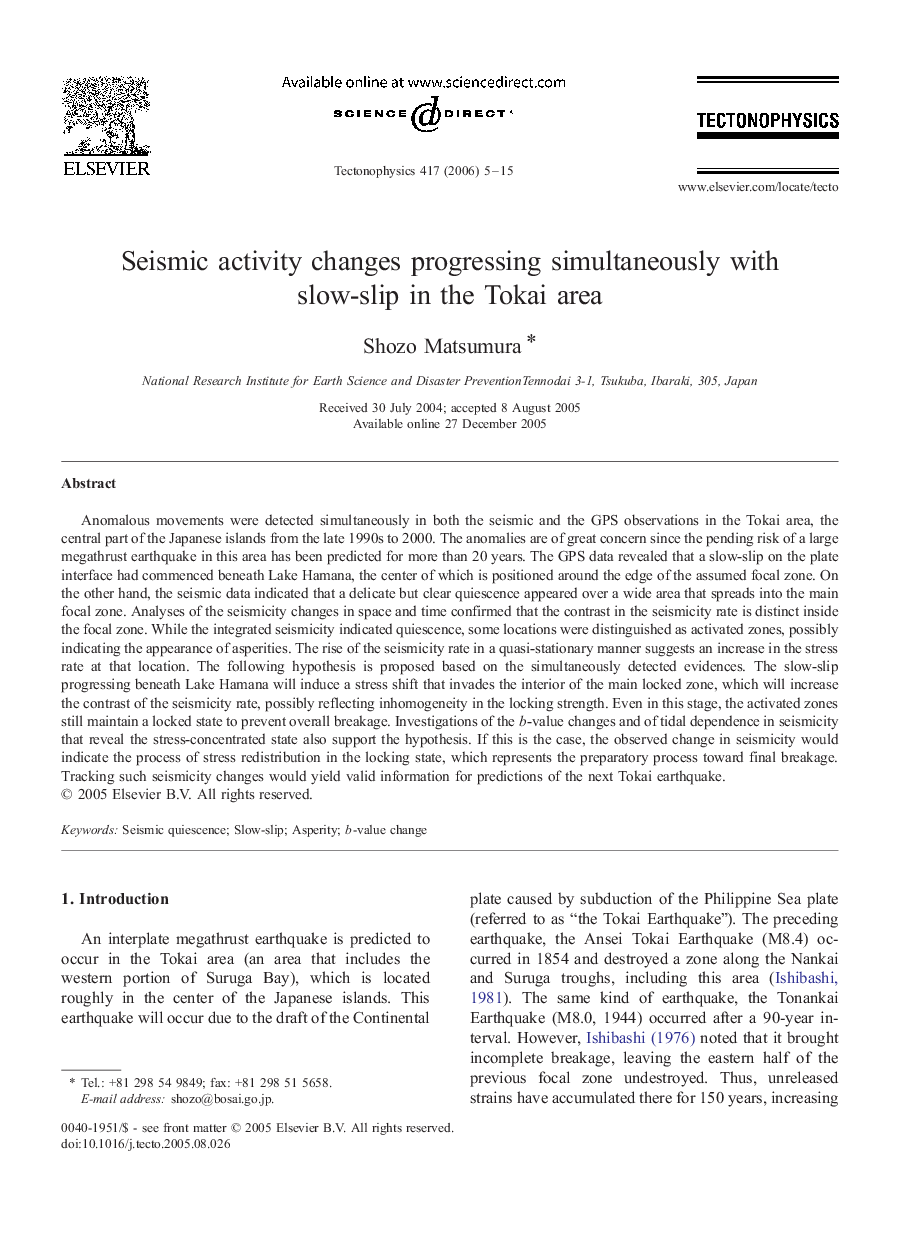| کد مقاله | کد نشریه | سال انتشار | مقاله انگلیسی | نسخه تمام متن |
|---|---|---|---|---|
| 4695261 | 1636959 | 2006 | 11 صفحه PDF | دانلود رایگان |

Anomalous movements were detected simultaneously in both the seismic and the GPS observations in the Tokai area, the central part of the Japanese islands from the late 1990s to 2000. The anomalies are of great concern since the pending risk of a large megathrust earthquake in this area has been predicted for more than 20 years. The GPS data revealed that a slow-slip on the plate interface had commenced beneath Lake Hamana, the center of which is positioned around the edge of the assumed focal zone. On the other hand, the seismic data indicated that a delicate but clear quiescence appeared over a wide area that spreads into the main focal zone. Analyses of the seismicity changes in space and time confirmed that the contrast in the seismicity rate is distinct inside the focal zone. While the integrated seismicity indicated quiescence, some locations were distinguished as activated zones, possibly indicating the appearance of asperities. The rise of the seismicity rate in a quasi-stationary manner suggests an increase in the stress rate at that location. The following hypothesis is proposed based on the simultaneously detected evidences. The slow-slip progressing beneath Lake Hamana will induce a stress shift that invades the interior of the main locked zone, which will increase the contrast of the seismicity rate, possibly reflecting inhomogeneity in the locking strength. Even in this stage, the activated zones still maintain a locked state to prevent overall breakage. Investigations of the b-value changes and of tidal dependence in seismicity that reveal the stress-concentrated state also support the hypothesis. If this is the case, the observed change in seismicity would indicate the process of stress redistribution in the locking state, which represents the preparatory process toward final breakage. Tracking such seismicity changes would yield valid information for predictions of the next Tokai earthquake.
Journal: Tectonophysics - Volume 417, Issues 1–2, 18 April 2006, Pages 5–15